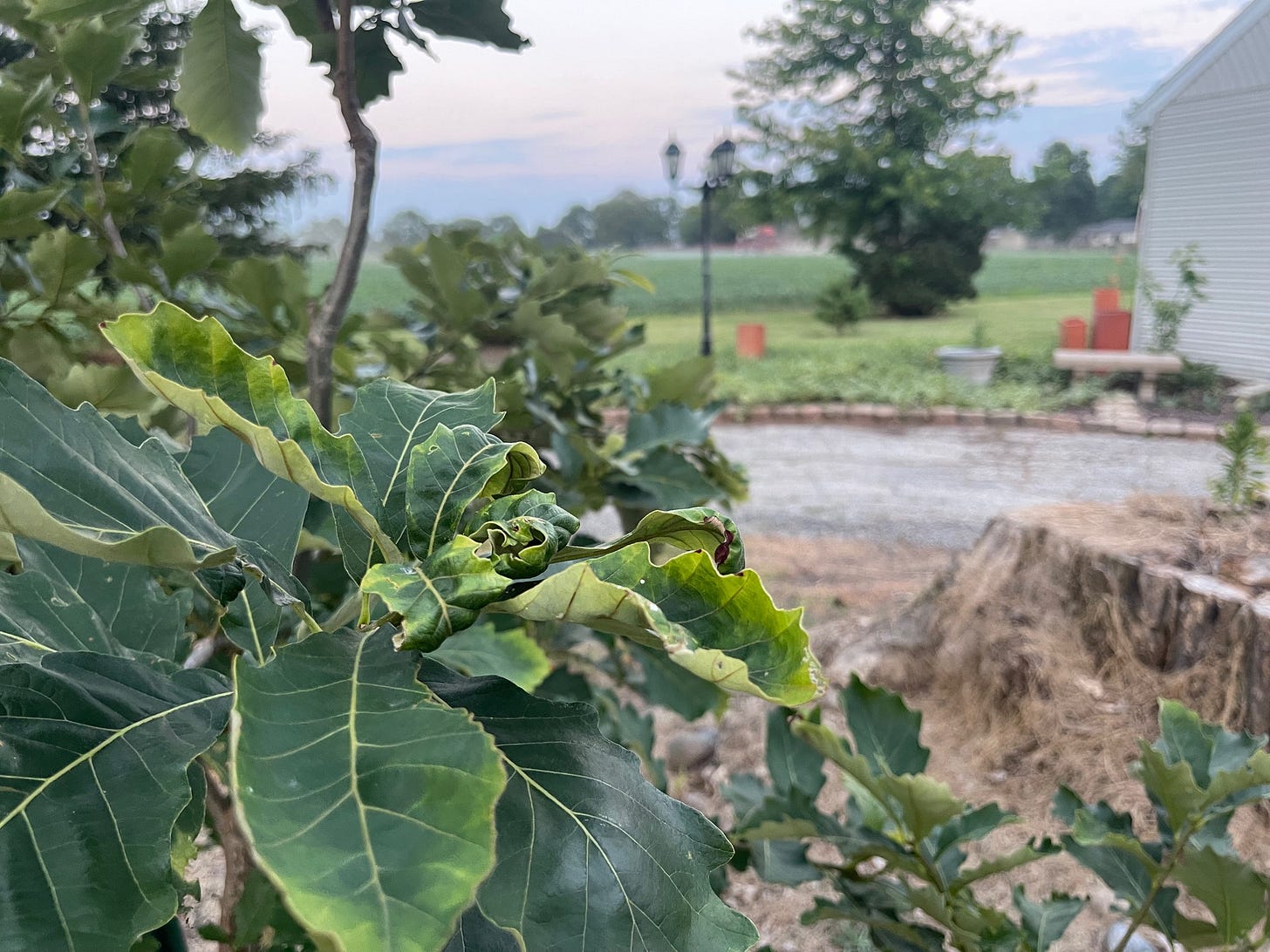How Do We Live Here?
A new project telling the stories of herbicide drift

For decades, spring has brought excitement for Patsy Hopper. Placing orders for new plants, like strawberries and raspberries, and dreaming about the bounties her 40-acre farm just south of Urbana, Illinois, will bring as the summer comes along.
This year, she keeps making out the order forms to nurseries, but she can't bring herself to send them in.
"It's useless," Patsy said this week. Like many retired Central Illinois residents, Patsy headed to Florida to escape the cold for a while. But she's coming back next week to her home, dreading the warmer weather, spring rains and brighter days that will lead to clouds of poison surrounding her home and killing the trees, flowers and bushes she's worked for decades to nurture.
"When I go home, it's going to be total depression," Patsy said.
That's the reality of spring in Central Illinois. As the daffodils and tulips bloom and people like Patsy feel the irresistible pull of the soil, farmers begin spraying burndown herbicides to clear their fields for endless rows of corn and soybeans. But the chemicals don’t stay put — they drift beyond their intended targets, harming everything in their path.
Trees, which cannot move, are hit again and again, year after year, losing more strength every time. Seeds planted in the spring are sometimes hit as soon as they pop up. Patsy’s entire orchard has been wiped out. A few years ago, she planted a new one, and it’s struggling. She used to get 30 gallons of cherries from her trees and was able to harvest enough for one pie last year. She’s submitted complaint after complaint to the Illinois Department of Agriculture for years, but had little luck stopping the damage.
For nearly a decade, I've written about the damage caused by herbicides to crops, gardens and natural areas. This work began in 2016, when Monsanto released dicamba-resistant soybeans without an approved version of dicamba to be sprayed on them, resulting in many farmers illegally spraying older versions. The next year, dicamba was approved to be sprayed and a record number of pesticide misuse complaints were filed across the Midwest and South. As I later reported, Monsanto and BASF knew dicamba would harm people and released it anyway in an effort to corner the soybean market.
Since then, the pesticide treadmill – the ever-increasing number of weed killers used to combat ever more resilient weeds – has only accelerated. Researchers have found volatile herbicides like 2,4-D and dicamba – increasingly used as weed killers like glyphosate (more commonly known as Roundup) become less effective – are moving miles off of where they're applied, drenching the entire region in poison. They’re also driving hundreds of endangered species toward extinction.
Over the years, I’ve heard heartbreaking story after heartbreaking story from farmers trying to eke out a living or who lost their livelihoods. From gardeners who no longer know if the meager harvests they manage to get are safe to feed their families. From timberland owners who are losing their centuries-old trees.
So this year, I've decided I'm going to make a concerted effort to track it, to tell the stories of people like Patsy, Martin, Abbie, Bill, and myself. People who are trying to grow their own food, plant trees in their yard, basically live the life they want to live in their own home.
On this page, I’m going to try to answer the question: How do we live here?
The powers that be have allowed Central Illinois to become a sacrifice zone for industrial agriculture, allowing widespread poisoning of the air, water and land that we call home. More than 99 percent of the prairie that once dominated this landscape has been turned into corn and soybeans. But many people still love this place and are trying to create a healthy and fulfilling life here, and they should be able to.
For Patsy, that life was able to exist for decades.
"We started this farm, and I didn't work. I stayed home and planted things for my future. I would lay around on this farm that I love, watch my flowers, eat the fruits and vegetables off the land, and not worry about it. And that has been taken away from me, apple trees are dying, cherry trees are dying, fruit trees are dying,” she said. “I planted a new orchard in a different location. It got hit. Where do you go?"
The order form is the physical manifestation of the longing and grief Patsy experiences. She fills it out, dreaming of a bounty of raspberries like she used to get. Then, Patsy remembers the losses her bushes have seen over the years. She got maybe a quart of raspberries from her patch last year, after it was hit by herbicides, she said.
"I can't bring myself to plant something and let it get hit," she said. She still hasn’t sent the order form.
Her son is more optimistic, something Patsy admires. He started planting at her farm a couple weeks ago; some tubers, peas, onions, radishes and lettuce are already in the ground. She's nervous about what they'll look like when she gets home.
"It's a good thing he wants to do it. I think it's good to keep planting. I have a little glimmer of hope that someone cares," she said. "I hope it's not hopeless.
"We're trying to grow our own food, and can we?"

